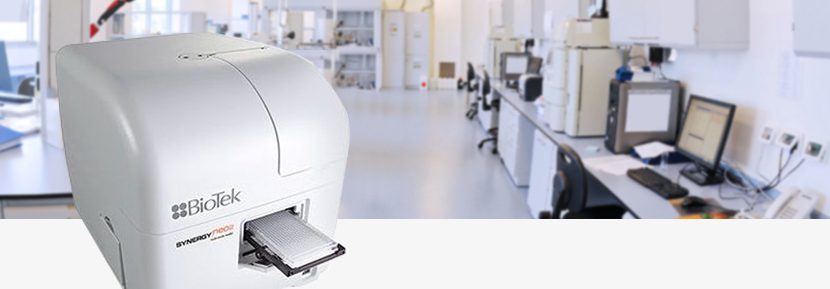Biologics development is an inherently complex field. In order to carry out the stringent bioanalytical testing your studies require, you not only need expert scientists with a deep knowledge of your assay demands, but also the analytical resources that only a state-of-the-art laboratory can provide. At BioAgilytix, enzyme-linked immunosorbent assays, more commonly known as ELISA, is a core competency, and the technique we most commonly leverage for ligand binding assays. While the method has been in use since the 1970s, automation has helped to dramatically improve throughput and sensitivity for ELISA assays, and our BioTek® Synergy 2 reader is able to achieve both with high performance.
ELISA Background and Uses
Before the development of ELISA, radioimmunoassay methods were the only way to conduct an immunoassay, and used radioactively labeled antigens and antibodies. Because of the health risks associated with this radioactivity, scientists worked to find a safer method, and by 1971 the first papers describing ELISA had been published. Since that time, ELISA has remained a popular and viable technique used in bioanalytical laboratories worldwide, and many innovations in the method have further refined and improved upon the performance and precision of its detection capabilities.
Today the ELISA method is one of the most diverse available, and is used for peptide antibody, hormone, and protein detection and quantification. The platform comes in a variety of mechanisms, including direct, indirect, sandwich, competitive, and ELISPOT, each with its own optimal applications. Testing is typically performed on a microtiter well plate and assesses the conjugated enzyme activity via incubation with a substrate to produce a measurable signal. On microtiter plates reagents are immobilized, making it easier to separate bound and non-bound materials during the assay, so that non-specifically bound materials can be readily washed away and specific analytes can then be measured.
BioAgilytix’s own ELISA platform supports a variety of detection modes, including UV-Vis absorbance, fluorescence intensity, luminescence, fluorescence polarization, time-resolved fluorescence, and Alpha, as well as end point, kinetic, spectral, and well-area scanning read methods.
Benefits of ELISA
Since its creation, ELISA has been a mainstay in the bioanalytical field as a flexible, robust platform to support a variety of assay needs. You can find it in use supporting work for biomarkers, immunogenicity, pharmacokinetics, and cell-based assays, and helping to further research dealing with most disease states. But ELISA’s flexibility is not the only reason BioAgilytix’s scientists like to work with the platform. ELISA consistently delivers the high sensitivity, specificity, and reliability we need to meet our customer’s most challenging ligand binding assay demands. We combine ELISA kits with the automation-driven performance of the Synergy 2 (which includes dedicated optical elements, optimized for each specific modality, to enable very low limits of detection) to detect and quantify specific analytes fast and with high precision.
BioAgilytix’s Platform Expertise
Our veteran team of large molecule experts brings extensive experience working with ELISA to deliver highly reliable, high throughput assays, and most importantly in leveraging ELISA to meet our clients’ most demanding assay challenges. We can help you decide if ELISA is right for your project, or if another of the tools in our tool box would best meet your project’s needs. We can help you take advantage of the robust capabilities of the right platform to progress your development efforts and solidify your competitive edge.
Speak to one of our scientists today to find out more about how we can help you leverage ELISA, or another platform in our advanced, world-class suite of bioanalytical instruments, to progress your large molecule study.
